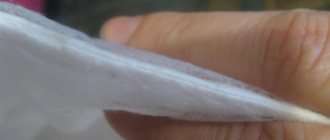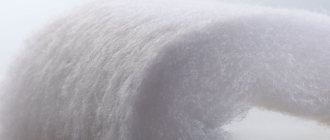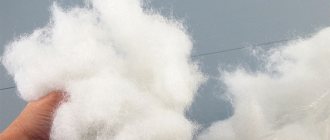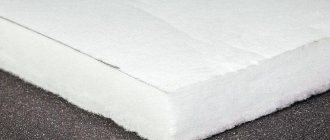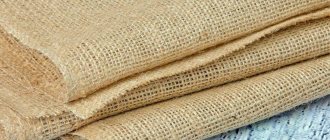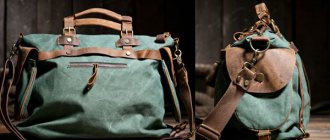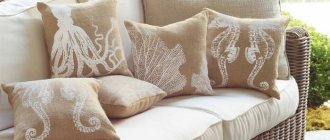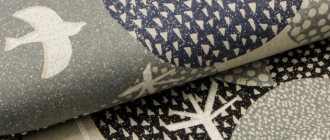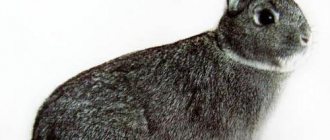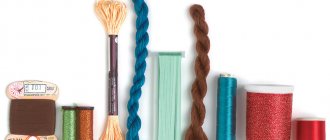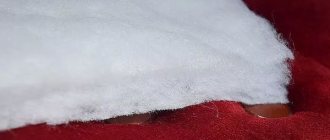This material is a domestically produced heat insulator and is designed for use in professional fields of human activity. The creation of the fabric is based on a special principle of connecting fibers, which involves the use of polyester microfibers.
In this article we will reveal several secrets and tell you what Shelter insulation is, we will turn to the main features of the texture, we will analyze the advantages and disadvantages, we will highlight the criteria for choosing clothes from it, and we will also tell you where it is used.
Production Features
Non-woven synthetic insulation is the result of research and extensive work by Russian chemists. In the production of textiles they use a special fiber – “Organic Fiber”, which is several times thinner than human hair.
How is dense filler made? Craftsmen make it using hot air. High temperatures help bond the material without the use of various harmful chemicals. This production method is environmentally friendly for nature and harmless to humans.
This technology used by scientists is called 4D. Thanks to this method, the fabric retains all its qualities for a long time and is maximally resistant to elastic deformation. Shelter insulation is used in construction (for various surfaces) and in textiles (for warm winter clothes).
For the first and second cases, there are a huge number of varieties, slightly different from each other in their indicators. For example, for the clothing industry - it is the most durable, reliable and warm.
History of the origin of the material
Shelter is a Russian brand of insulation made from polyester fibers. The materials were developed by technologists from the Ves Mir factory, taking into account the requirements of the clothing industry.
Initially, specialists created a heat-insulating porous material from polymer fibers for the furniture industry and construction. Later, shelter insulation for sewing clothes appeared.
Reference! Shelter means “shelter” or “shelter” in English. Thus, the developers emphasized the high degree of protection provided by the insulation.
In 2009, the material was successfully tested for use in the extremely harsh conditions of the Arctic and Far North. As tests have shown, shelter insulation for clothing can withstand temperatures from -52 °C and wind gusts of 20-22 m/sec.
Main technical characteristics
Now let's take a closer look at the properties of the material. They vary slightly depending on the application, but the average values remain the same.
Let's look at the main indicators:
- The canvas can be used for a long time.
Thanks to the manufacturing technology, it is durable: the jacket will last you for several decades, and the construction raw materials will last for almost a century.
- Environmentally safe and does not pose a threat to health.
This is very important, since children can also come into contact with shelter insulation for clothing. Harmful chemical vapors from other tissues harm the general condition of the child and cause allergic reactions. Even during production it does not generate dust.
- Resistant to rodents, moths and moisture.
Most small pests do not favor polyester fibers, and therefore mice or moths will not get into your overalls. You can also be calm about mold: moisture is not retained, and the greenhouse effect does not occur.
- Does not oxidize and does not react with chemical reagents.
The fabric is resistant to many alkalis and acids. The material can be easily washed using regular powder.
- Belongs to the group of non-flammable fabrics.
Shelter clothing insulation is practically incapable of burning. It also has another important property: when exposed to fire, the fiber simply melts without emitting harmful substances into the atmosphere, including large amounts of acrid smoke.
- It varies in density depending on the type and purpose.
For clothing, lighter weight fabrics are used, for construction - maximum weight and density.
- Lets out steam.
Vapor permeability helps combat overheating and damage to walls when used as cladding. The filler helps maintain a favorable temperature in the room and under a warm jacket.
- Does not absorb moisture.
The canvas has virtually no tendency to get wet due to the materials used in production. Even if water gets on the fabric, it will not change its properties.
- Retains heat well.
The thermal conductivity coefficient of the insulation is quite low, and therefore you will be warm in a sheathed room or in a brand new jacket.
Features and characteristics of Shelter insulation
Shelter is a truly universal type of insulation. It combines the properties of natural fur and synthetic substances. Read about Turkish bamboo towels here.
As a result, even a relatively thin layer of this substance can well protect a person from hypothermia at low ambient temperatures.
Composition: what is the filler made of?
It is a high-tech synthetic material with heat-insulating properties. It is designed using ultra-fine microfibers. This allows for a good level of breathability with increased thermal protection. Read about the elasticated bedspread and bed cover here.
Production takes place from special polyester microfibers. As a result, the material is not able to absorb moisture. It is recommended for use in the production of clothing and some accessories intended primarily in cold climates.
The widespread use of Shelter is due to its properties. They are as follows:
- vapor permeability;
- flexibility and elasticity;
- durability;
- heat preservation;
- light weight;
- safety for human health;
- environmental friendliness.
In accordance with the tests carried out, it was proven that the insulation does not cause allergic reactions in people. Its important feature is the ability to wash in a machine.
It is distinguished by its ability to provide reliable thermal protection. Tests of this material were carried out at temperatures ranging from -23 to -58 degrees Celsius with a humidity of 80% and a wind of 20-22 meters per second. They were organized in 2014, which is part of the Russian Geographical Society. The tests took place as part of the study of the polar ring in the Yamal-Nenets Autonomous Okrug. Read about an orthopedic sleeping pillow in this article.
The results noted the following:
- hydrophobicity;
- low weight;
- comfort of clothing.
Clothing made from Shelter is recognized as meeting the required level of warm comfort. Sleeping bags made from this material received special thanks from the Russian Geographical Society.
Before purchasing a product, you need to pay attention to a number of its important consumer qualities. The main advantages of the substance are as follows:
- Reliable protection against low temperatures. This is due to the use of special microfibers. They do not allow the cold to penetrate, thereby providing good thermal protection.
- Comfort and freedom of action. Due to the fact that the fibers are elastic, the manufacturer has the opportunity to produce clothes that will not restrict a person’s movements.
- Ensuring good heat transfer. Even under very intense loads, the human body in clothes has the ability to breathe.
- Complete security. Studies have shown that it does not cause allergic reactions in humans. In addition, it is environmentally friendly, which is confirmed by relevant certificates.
- Ease of care. Dries very quickly and well. After washing using an automatic machine, it does not shrink.
Like any other heat-insulating substance, it has a number of disadvantages. Among them it is worth highlighting the following:
- High price. It is due to the uniqueness of the material, its production technology and the financial resources invested in research.
- Vapor permeation. In this indicator it is inferior to some organic fibers.
Thus, it has relatively few disadvantages. Its advantages completely compensate for them. That is why this Russian-made material is currently enjoying corresponding popularity.
Advantages of insulation
Shelter has a number of advantages over other thermal insulation fabrics.
The advantages include:
- Versatility of use.
A wide range of products helps you choose the option you need for textiles or construction.
- Eco-friendly and hypoallergenic.
This fiber is easily used when sewing children's clothing. They are also advised to insulate even such environmentally friendly buildings as wooden houses. All this is possible due to the fact that no harmful glue is used in production.
- Protection from getting wet.
Polyester does not retain moisture, and therefore the fiber almost always remains dry.
- Retains heat even with the smallest thickness.
The thickness of the filler starts from 50 mm. This indicator also indicates the thermal conductivity of the fabric.
Types of insulation for shelter clothing
The technology for the production of insulating sheets is implemented in different versions to expand the range of resulting materials. There are several modifications of polymer insulation on the market.
- Shelter Micro is a premium insulation material for children's and adult outerwear. The material is used in the manufacture of everyday outerwear, sportswear for lovers of extreme activities, and sleeping bags. Products with shelter micro insulation can be used in climate zones with critically low temperatures.
- Shelter Loft is an amazing insulation with the ability to repel water. Used for the production of sleeping bags and sportswear.
- Shelter Fashion - exquisite insulation for exclusive warm clothing allows you to create a range of products with excellent heat-insulating properties.
- Shelter Kids is a cozy insulation for children's clothing, made with a special degree of protection and hygiene.
- Shelter Home – insulation for home mattress covers and blankets. It is intended for moderate temperatures.
- Shelter Profi is a harsh heat-insulating material for people working in extreme conditions.
There are the following types of products in this last group:
- for especially low temperatures;
- for additional protection against electricity;
- for comprehensive protection against static electricity and fire;
- for protection against the action of an electric welding arc.
The density of insulation depends on the purpose. The more severe the conditions of the intended use, the higher the density of the insulation.
The main disadvantages of Shelter insulation for clothing
If you decide to opt for equipment made from this material, then you should take into account some of the disadvantages.
These include:
- Passing steam, but not in large quantities.
Vapor permeability is still weaker than most organic fibers.
- The price of the original canvas is quite high.
This also affects the cost of things made from it. The cost is offset by quality and other benefits.
Prices and nuances of care
The cost of the material depends on the type of shelter and its density. With a width of 150 centimeters, the price tag per linear meter starts from 120 rubles for lines with low density and can reach 600-700 rubles for options with high density.
The cost of ready-made uniforms starts from 2,000 rubles per set. Each additional layer of insulation in clothing increases the cost of the material, and therefore increases the final price tag.
The manufacturer of the material recommends using a delicate washing cycle (up to 40 degrees) or having the workwear dry cleaned to preserve its original properties. After machine washing, the material does not shed. The use of mechanical drying is not allowed: the usual hanging of workwear on a hanger preserves the structure of the fibers and protects against loss of performance. It is forbidden to iron the shelter - a steamer will perfectly cope with the problem of unevenness.
Criterias of choice
During construction:
- The exclusive right to create this filler belongs to only one.
- The manufacturer notes that the color should vary from white to beige. This shade continues in the future.
When choosing sports equipment, remember that the clothing should be:
- Warm. It’s good if the jacket or sports trousers have leg warmers that keep the cold out, fur trim or a spacious hood.
- Convenient. Try on the item and walk around in it, try to sit down, bend over, make sure that nothing is pressing or restricting movement.
- Quite dense. The fabric should not be see-through. In a high-quality fabric, the threads fit tightly together.
- The label must indicate the percentage of shelter content. The optimal value is 100%.
Alternative uses
Effectively retaining heat, shelter is successfully used for the production of casual outerwear for adults and children.
The material is in demand for creating equipment for organizing northern expeditions in extremely low temperature conditions, as well as for field conditions for representatives of law enforcement agencies - the Ministry of Defense and the Ministry of Internal Affairs.
In construction, thermal protection material is a universal insulation material for buildings, structures, interfloor ceilings, facades, roofs, and attics.
For thermal insulation, polyester boards are used, simplifying the installation process for large volumes.
The Shelter Loft line is used to produce sleeping bags, and Shelter Home - mattress covers and blankets.
Polyester insulation “STANDARD” (6000x600x50mm) ShelterEcoStroy
Polyester insulation Shelter Ecostroy Standard
was developed as a universal insulation material that is suitable for all types of structures and all types of heat and sound insulating structures. The universal characteristics of the material allow it to be widely used in construction. ShelterEcoStroy Standard ideally adheres to any insulated surface, fills all cavities and is successfully used in the construction of frame and wooden houses. The insulation ideally adheres to any insulated surface, fills all cavities and is successfully used in the construction of frame and wooden houses. This is a universal insulation material that is suitable for all types of structures and all types of heat and sound insulating structures.
Dimensions
6000x600x50 mm.
Packaging:
7.2 sq.m., 0.36 cubic meters. Does not contain phenol and other harmful volatile substances.
APPLICATION OF SHELTER ECOSTROY STANDARD
Pitched roofs, attic floors, walls (frame), interfloor ceilings, floors with joists.
ADVANTAGES OF SHELTER ECOSTROY STANDARD
- Safe for health.
Does not emit toxic substances either during normal operation or during combustion. Does not contain phenol-formaldehyde - all fibers are connected with hot air, and not with a synthetic adhesive binder. - Organic fiber.
Special fibers have elasticity and considerable length. They do not break and do not generate dust - 4D technology.
Being an elastic material, ShelterEkostroy is able to insulate curved surfaces, as well as maintain the structure for a long time in space and time. - Doesn't itch, doesn't prick.
During installation, no special protective equipment is needed, since the fibers do not break and do not generate dust. And when insulation waste comes into contact with the skin, inflammatory processes and allergic reactions do not occur. - It is not subject to mold.
Shelter Extra is not favorable for the spread of mold fungi, since it is not a natural material. - Economy.
Shelter Ecostroy is an elastic material that does not break up into small pieces during installation. The pieces of insulation can be put into a bag until a certain time, nothing bad will happen to them. They will retain their shape for a long time. - Not afraid of water.
The Ecostroy shelter always remains dry, because the water absorption coefficient is extremely low, and due to this, the adjacent structural elements extend their service life. - Has no service life.
ShelterEkostroy is not subject to aging and can be used many times. Having disassembled the structure, you can use the insulation in other buildings
